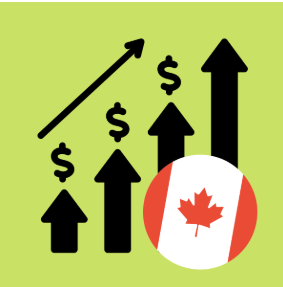The Bank of Canada has largely taken a wait-and-see approach as it gauges the economic impact of U.S. tariffs — and many economists now believe it may continue to hold steady for the time being.
Following a quarter-point interest rate cut in March, the central bank kept its benchmark rate unchanged at 2.75 per cent in both April and June. With recent employment data showing a surprising uptick and core inflation remaining stable at around three per cent, most economists expect the Bank to stay the course at its next policy decision on July 30.

Also Read: Top Canadian tech AI stocks
The Bank of Canada typically lowers interest rates to encourage borrowing and spending when economic support is needed, but holds or raises them when inflation is a concern. Many forecasters still anticipate one or two more quarter-point cuts in the coming months to help buffer the Canadian economy against the ongoing trade war.
However, some, including RBC, argue the Bank should pause further cuts. RBC chief economist Frances Donald noted that while there are weak spots in the economy — such as a sluggish housing market and struggling manufacturing sector hit by tariffs — it’s unclear whether rate cuts would actually help address these issues.
Also Read: Best long term Canadian stocks
Donald pointed out that monetary policy is a broad tool that affects all regions equally. That means a rate cut would apply just as much to Windsor, Ont., with its 11 per cent unemployment rate, as to Victoria, B.C., where unemployment sits at just 3.9 per cent. She argued that targeted fiscal support from the federal government would be more effective in such cases.
According to Donald, the 2.25 percentage points in rate cuts delivered over the past year are still working their way through the economy. In her view, the Bank of Canada can now step back and allow government spending to take on more of the economic support role — unless a more widespread downturn emerges.
RBC also takes a relatively optimistic view of the economy, expecting growth to rebound in the latter half of the year due to strong consumer spending and a recovery in business confidence.
On the other hand, Oxford Economics believes Canada is already in a recession that will persist through the rest of the year. Still, the firm doesn’t expect more rate cuts. While it anticipates job losses to rise, it also forecasts inflation reaching three per cent by mid-2026, driven by tariffs and ongoing supply chain issues. As a result, it believes the Bank of Canada will keep rates on hold to counter future inflation pressures.
Donald emphasized that after the sharp inflation spikes during the pandemic, Canadian households remain wary of any renewed price increases. “Canadians have been through a serious affordability crisis,” she said, and the Bank will likely want to avoid triggering another wave of inflation.
Meanwhile, BMO continues to forecast three more interest rate cuts, with the last one projected for March next year. But BMO chief economist Doug Porter acknowledged that the case for fewer cuts is strengthening. He noted that financial markets now expect only one more cut, and with federal spending — particularly on infrastructure and defence — expected to ramp up, there may be less need for monetary policy easing.
Stephen Brown, deputy chief North America economist at Capital Economics, disagrees with the notion that rate cuts are off the table. With unemployment still near seven per cent and economic output below potential, he argues more cuts are likely needed. He expects the policy rate to fall to 2.25 per cent before the current easing cycle ends.
At 2.75 per cent, the Bank of Canada’s benchmark rate currently sits in the middle of its “neutral range,” meaning it’s neither stimulating nor slowing the economy. Donald believes this gives the Bank flexibility — it can cut rates further if needed or hold steady if inflation persists.
She doesn’t foresee rate hikes any time soon but believes the Bank is well-positioned to wait for clearer data before making its next move. “They could stay at this level for the next one to two years, waiting for the next shock — whichever direction it comes from,” she said.
Sign Up For our Newsletters to get latest updates






